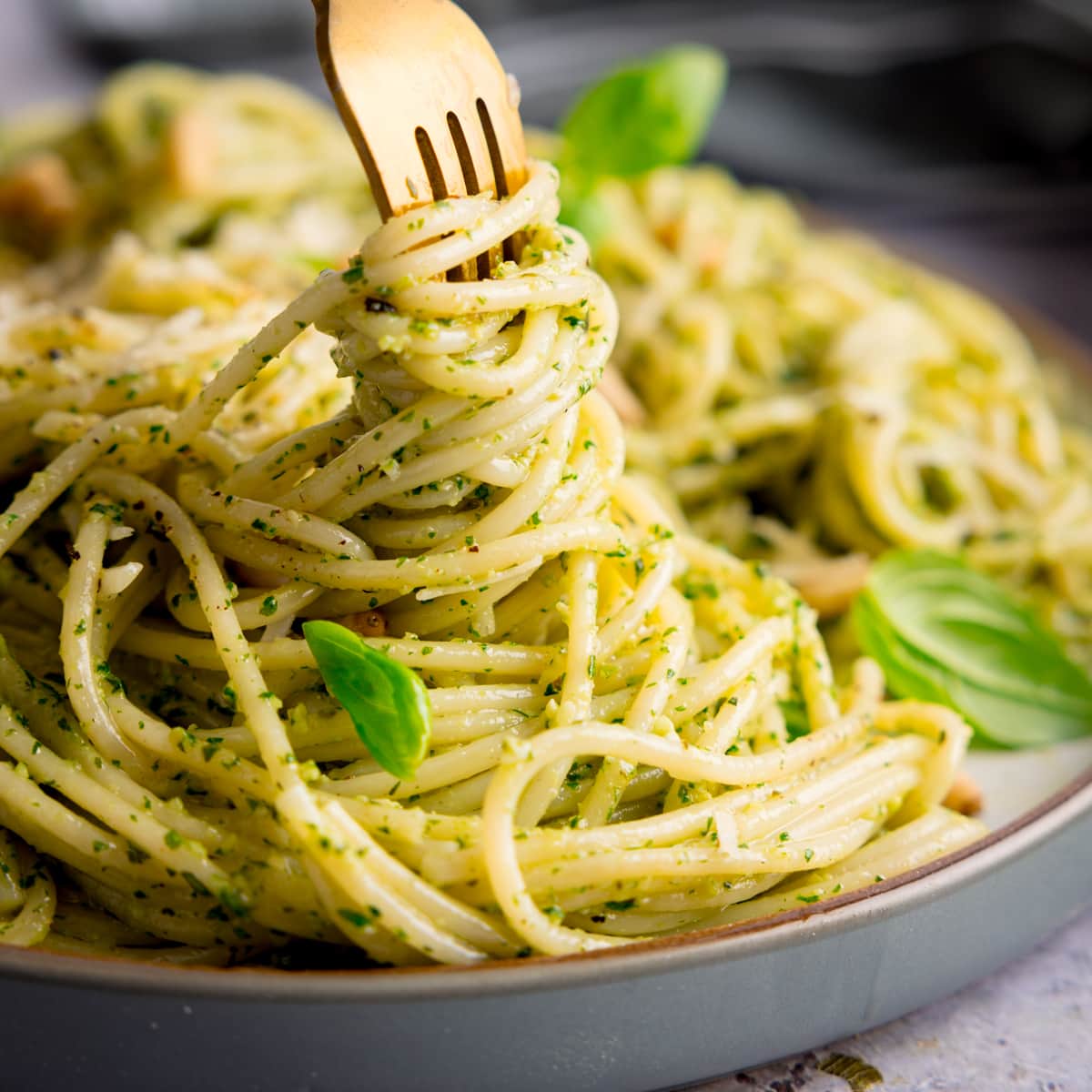Pesto, a vibrant and aromatic sauce originating from Italy, captivates taste buds with its fresh and herbaceous flavors. Renowned for its versatility and distinctive taste, this basil-based sauce has transcended its origins to become a beloved culinary delight worldwide.
Origins and History:
Pesto finds its roots in the Liguria region of northern Italy, particularly in Genoa, dating back to the late 19th century. Traditionally, the sauce was prepared using a mortar and pestle, combining fresh basil leaves, garlic, pine nuts, Parmesan or Pecorino cheese, and high-quality extra-virgin olive oil. The name “pesto” is derived from the Italian word “pestare,” meaning to crush or pound, alluding to the sauce’s traditional preparation method.
Flavors and Ingredients:
The hallmark of pesto lies in its vibrant green hue and intense flavors. The primary ingredient, fresh basil leaves, contributes an aromatic and herbaceous quality to the sauce. Combined with garlic, pine nuts, and cheese, typically Parmesan or Pecorino, it offers a harmonious blend of nuttiness, saltiness, and umami richness. The use of high-quality extra-virgin olive oil binds the ingredients together, imparting a smooth and luscious texture.
Varieties and Adaptations:
While the classic Genovese pesto remains iconic, variations and adaptations have emerged over time to cater to diverse tastes and preferences. Varieties include sun-dried tomato pesto, spinach pesto, arugula pesto, or even nut substitutions like walnuts or almonds for pine nuts. These adaptations offer unique flavor profiles, allowing for creativity in both traditional and contemporary culinary creations.
Culinary Uses and Pairings:
Pesto’s versatility extends far beyond its role as a pasta sauce. Its vibrant flavor makes it an ideal accompaniment for numerous dishes. It serves as a delightful topping for pizzas, a flavorful spread for sandwiches or bruschetta, a dip for vegetables, or a condiment to enhance the taste of grilled meats or seafood.
Pairing pesto with pasta remains a timeless classic. Its ability to cling to pasta strands, coating them in a burst of fresh flavors, makes dishes like spaghetti alla Genovese or trofie al pesto iconic representations of Italian cuisine. Additionally, incorporating pesto into soups, salads, or as a marinade for chicken or fish elevates these dishes, infusing them with a burst of herbaceous goodness.
Homemade Pesto Recipes:
Creating pesto from scratch allows for customization and the use of fresh, high-quality ingredients. Here’s a traditional Genovese pesto recipe:
Classic Genovese Pesto:
Ingredients:
- 2 cups fresh basil leaves, packed
- 1/2 cup pine nuts
- 3 cloves garlic, peeled
- 1/2 cup grated Parmesan cheese
- 1/2 cup extra-virgin olive oil
- Salt and pepper to taste
Instructions:
- In a food processor or blender, combine basil leaves, pine nuts, garlic, and Parmesan cheese.
- Pulse the ingredients while gradually adding the olive oil until a smooth paste forms.
- Season with salt and pepper to taste.
- Store the pesto in an airtight container, ensuring a layer of olive oil covers the surface to preserve its vibrant green color.
Conclusion:
Pesto, with its rich history and versatile nature, continues to enchant palates worldwide. Whether enjoyed in its traditional form or through creative adaptations, its vibrant flavors and fragrant aroma bring a burst of freshness to dishes, enhancing culinary experiences.
From its humble beginnings in Italian kitchens to becoming a beloved global condiment, pesto remains a testament to the beauty of simple yet flavorful ingredients. Its ability to elevate a wide array of dishes has secured its place as a cherished sauce that continues to inspire gastronomic innovation.




